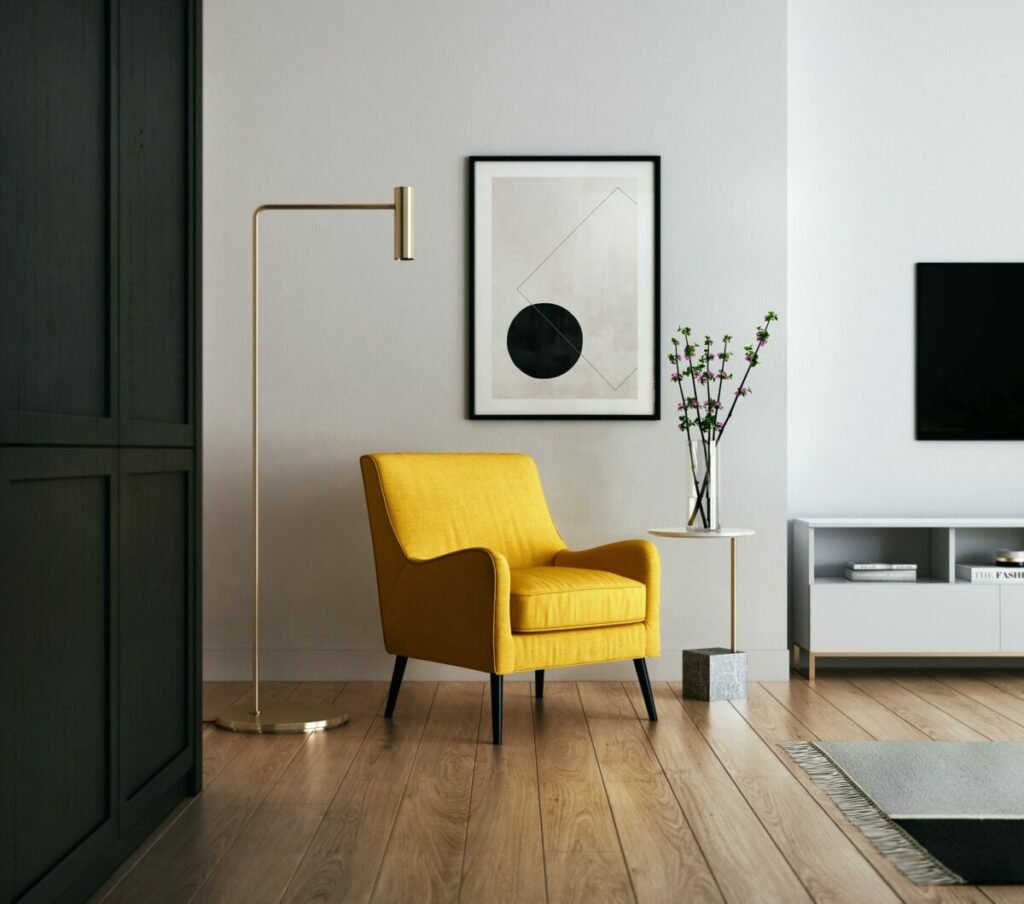
The way someone curates their personal space conveys who they are. For a writer, that’s hugely important. “Show, don’t tell” is a guiding principle of effective storytelling. To wit: the oft-repeated movie scene featuring a wiseass sidekick walking into the leading man’s apartment, lousy with unpacked boxes, and saying, “Love what you’ve done with the place.” The old saw is employed because decorating—or its opposite—carries a lot of information.
If you’re writing a character, ask yourself if the character’s home is consistent with other aspects of the personality you are trying to impart. As a reader, would you swing open the apartment door and say, “Of course the guy has Hello Kitty throw pillows.” Or would you stumble back into the hallway and say, “What the hell?” (I’m actually a little sensitive to these types of assumptions because an acquaintance came to visit once and exclaimed, “Wow, Erika! Your home is so much calmer than I would’ve thought,” which was confusing, rude, and cause for that to be the last time I invited her over.)
A friend who keeps me company on the laissez faire side of the street had frozen peas coming out of her ice maker for a time. The little green orbs that bobbed in water glasses raised nary an eyebrow at her table (though I did purse my lips so as not to choke). But that little vignette is revealing, about both of us. So, too, is the (passive-aggressive) act performed by a different old friend who drives all the way from Richmond, Va. to Charlottesville to reinstall my Charmin so that the paper rolls above rather than under, which everyone knows is wrong.
I have another close friend whose interior design includes the occasional writing on the wall. Literally. She’s scripted messages directly onto the plaster of her gorgeous old Virginia farmhouse: “What if I fall?” “Oh, but my darling, what if you fly?”
The very presence of the quote from Erin Hanson’s poem installs a beautiful window into character. The selection of a character’s art is incredibly informative. What type is he drawn to? Does he have gallery walls or are frames casually leaning back on stacked books? Are there themes to each assemblage, or is there a complete lack of connective tissue between pieces? If so, what does the totally eclectic collection signify?
In my house there are a few main subjects—landscapes, animals, and cozy rooms. Full disclosure: I’ve chosen all of it. Which says something, too, I suppose. Provide a count of family photos sprinkled on the mantle. Is there a balance between one spouse’s side and the other’s? Does an uneven distribution hint at some hidden meaning or explanation?
If you’re writing a character, ask yourself if the character’s home is consistent with other aspects of the personality you are trying to impart.
To avoid having to retrofit your novel, it’s good to make a list up front. Ask yourself at the outset why a character is a minimalist. What’s with the severe angles and straight-backed seating arrangements (on which her guests must rigidly perch for an uncomfortable amount of time)? What if she were an overstuffed-butter-yellow-sofa-with-matching-ottoman-and-cat-splayed-atop kind of gal? How many junk drawers in her kitchen? Do they open? Are things labeled in the kids’ craft closet? Does music waft from room to room? What type? Is her aging white mother an aficionado of hip-hop? What was the journey that has her singing along with Kendrick Lamar? (Or perhaps there is no music at all in the house, just Maria Bartiroma shrieking from the gargantuan television dwarfing the living room couch.) Says a lot.
How about hostessing? Does the character habitually invite people in, offer guests anything from the kitchen? (Irish and English writers spend a lot of ink on proffers of tea, even asking who should “play mother” and tip the teapot.) What’s in her freezer? Are there body parts wrapped in aluminum foil? Or just free-floating vegetables? Is there a pre-printed grocery list on refrigerator?
Speaking of grocery lists, I knew someone who permitted herself eight ounces of Pepsi with lunch. Her affinity for control bled out all over the place. If she ever found her way into one of my stories I’d probably present her with a disorganized boss, someone who grew up on a commune, with pillars of manga holding up his ceiling and unsynched calendars screwing up everyone’s meeting times. He and Miss Put-Together would make each other crazy (involving HR on a regular basis) and then maybe eventually they’d fall in love. Or not. Either way, the characters’ personal settings, past and present, not only help drive the story, they are the story.
A version of this article appeared in the 9/18/2023 issue of Publishers Weekly under the headline “The Principles of Interior Design”

Share this post with your friends.

